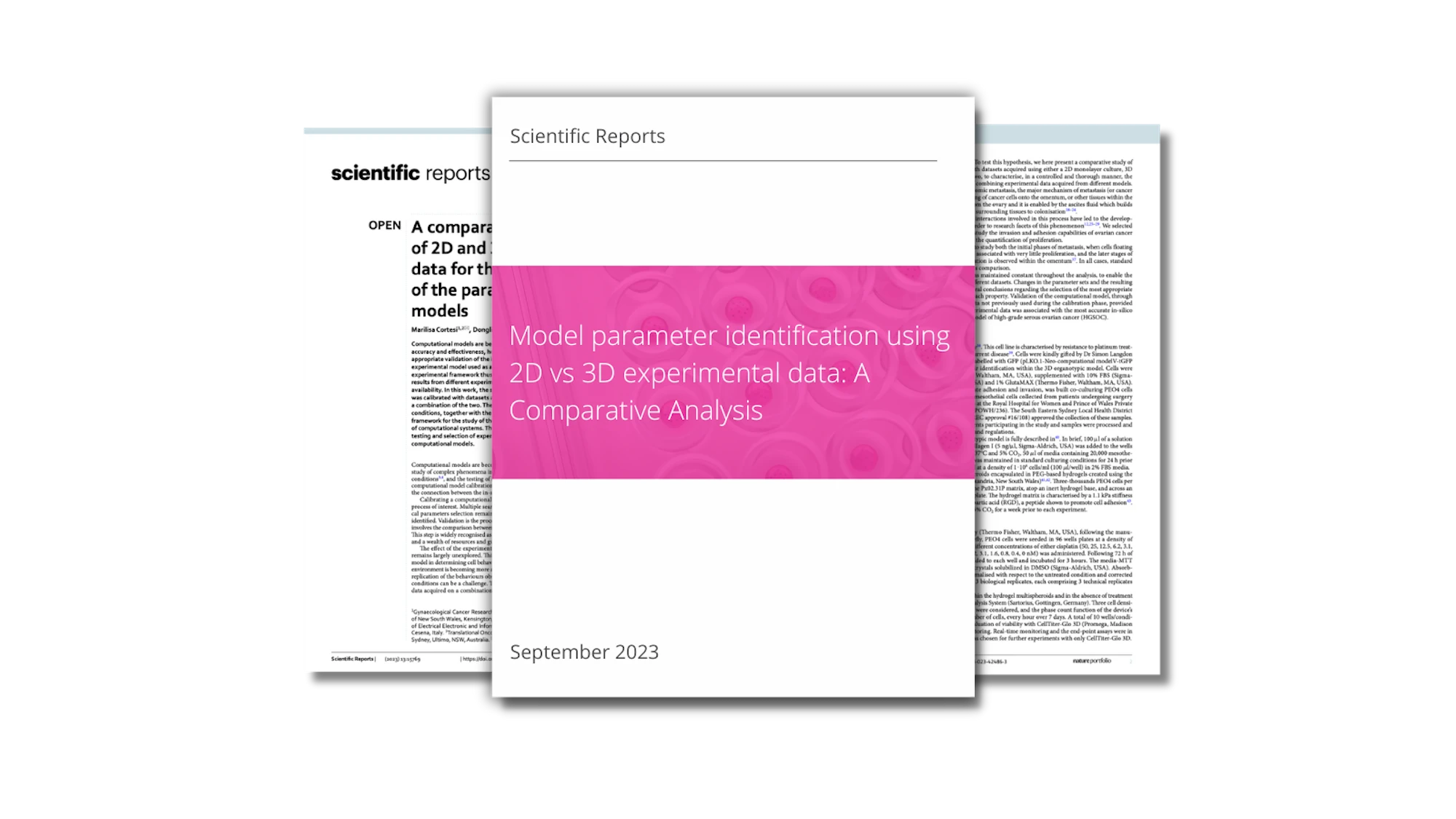
Model parameter identification using 2D vs 3D experimental data: A comparative analysis
Abstract
Computational models are becoming an increasingly valuable tool in biomedical research. They enable the quantification of variables difficult to measure experimentally, an increase in the spatio-temporal resolution of the experiments and the testing of hypotheses.
Parameter estimation from in-vitro data, remains a challenge, due to the limited availability of experimental datasets acquired in directly comparable conditions. While the use of computational models to supplement laboratory results contributes to this issue, a more extensive analysis of the effect of incomplete or inaccurate data on the parameter optimization process and its results is warranted. To this end, we compared the results obtained from the same in-silico model of ovarian cancer cell growth and metastasis, calibrated with datasets acquired from two different experimental settings: a traditional 2D monolayer, and 3D cell culture models.
The differential behaviour of these models will inform the role and importance of experimental data in the calibration of computational models’ calibration. This work will also provide a set of general guidelines for the comparative testing and selection of experimental models and protocols to be used for parameter optimization in computational models